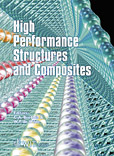Development Of Low-cost, Interconnected Matrix Composites For Valve Seat Application
Price
Free (open access)
Transaction
Volume
59
Pages
8
Published
2002
Size
525 kb
Paper DOI
10.2495/HPS020061
Copyright
WIT Press
Author(s)
M. Pidria, G. Boretto, M.E. Poggi, D. Vallauri & I. Amato
Abstract
The trend m today auto motive industry is toward improving performance and durability in spark ignition and methane engines. To accomplish these aims the development of advanced materials and improved engine design is required. In this context, ceramic monoliths and ceramic-metal composites have recently shown considerable results in reducing the wear of the valve train in internal combustion engines. An innovative, low cost method for producing co-continuous ceramic composites for near-net shape valve seat inserts has been developed in this work, providing a better understanding of the formation mechanism of the composite microstructure and combining a simple manufacture route with low processing and raw-materials costs. The co-continuous microstructure has been obtained by a solid displacement in situ reaction technique, immersing a sacrificial dense mullite preform m molten aluminium. This method allows near-net shape manufacturing of composite materials via a very cost-effective process. The final composite material consists of approximately 82% vol. interconnected alumina which provides wear resistance, high stiffness and excellent thermal properties, the remaining 18% vol. being interspersed aluminium, which acts as a toughening phase and improves thermal conductivity. Mechanical and wear properties of the composite material are promising, because of the excellent resistance to friction/wear, high stiffness and improved toughness respect to monolithic ceramics, combined with low density (3.62 g/cm3). This outstanding characteristics promote this new composite material as a viable candidate for several automotive applications, such as valve seat inserts, brake rotors, piston crowns and cylinder liners
Keywords





